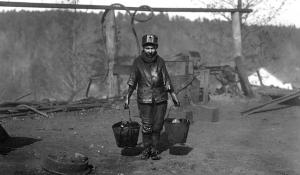
If you've read our spring 2016 Green American issue "Climate Justice for All," it might have brought up a number of questions and ideas. In the issue, we included this list of questions intended for community or reading groups who’d like to use the climate-justice articles in this issue as the basis for a discussion. Green America invites you to make extra copies of this issue for your group or share the digital issue.
1. What surprised you the most in reading these articles?
2. How is the climate justice movement connected to the water crisis in Flint, Michigan, (see People of Color are on the Front Lines of the Climate Crisis) and other environmental-justice battles?
3. Environmental- and climate-justice fights have been going on for years. (See Green America’s 2007 article on an egregious Flint-like case in Dickson, TN), but they usually don’t get the national media coverage Flint has gotten. Is the Flint coverage a positive sign that change might be slowly happening? Or just random chance?
4. The Black Lives Matter (BLM) movement has taken heat from those who mistakenly think its name means that non-Black lives do not matter, who then respond with “all lives matter.” BLM activists have said that what their name means is that “Black Lives Also Matter.” Discuss how “all lives matter” distorts the conversation.
5. What do the stories in this issue of the Green American about different communities have in common? How are they different? What do the similarities and differences say about how environmental injustice manifests?
6. Environmental justice pioneers like Dr. Robert Bullard and Dr. Beverly Wright have been working on these issues for more than a quarter century. What do you think it would be like to confront environmental racism and inequities on a daily basis? What would you do if you had to live with it, like the residents of Miami Beach? Or if you are living with it, how are you coping?
7. If you belong to a community group, how can you make sure that all voices in your home city are represented? How might your group go the extra mile to make every- one feel invited?
8. Dr. Robert Bullard says, “People of color may not belong to an environmental organization but are members of churches, civic groups, civil rights or faith- based organizations that do work in areas of environmental and climate justice. Environmentalism has to be broadened to incorporate organizations and groups that may not necessarily have ‘environment’ in their name.” In light of that statement, if you belong to an environmental group, how might it be encouraged to broaden its outreach to more people from different backgrounds?
9. What other climate-justice stories do you know about that weren’t included in this issue?







